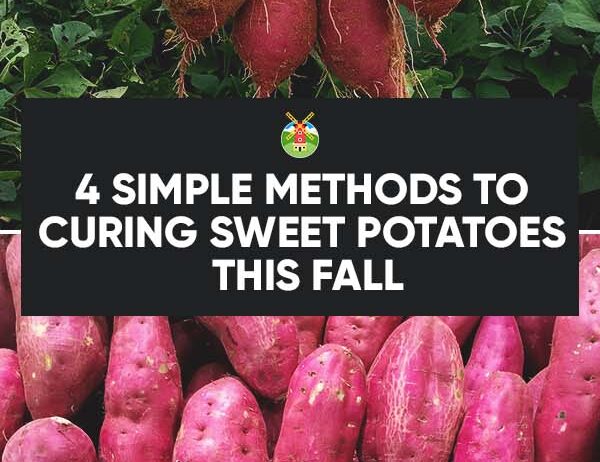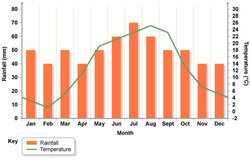Curing sweet potatoes is an essential process that enhances their sweetness and flavor while extending their shelf life. For those residing in cold climates, the notion of curing these tubers may seem daunting, yet it is entirely feasible with the right techniques and understanding. This article delves into the methods and considerations associated with curing sweet potatoes in less-than-ideal weather conditions, dispelling myths and providing actionable insights.
Understanding Sweet Potatoes
Before embarking on the curing journey, it is imperative to grasp the characteristics of sweet potatoes. Unlike regular potatoes, sweet potatoes thrive on warmth and require specific conditions to flourish. The curing process is crucial as it allows the starches within the sweet potato to convert into sugars, rendering them not only sweeter but also more palatable. This transformation is initiated during the post-harvest stage and ideally occurs in a controlled environment.
Optimal Conditions for Curing
Curing sweet potatoes requires a delicate balance of temperature, humidity, and airflow. The ideal condition for curing is between 80°F to 85°F with a humid environment of around 85% humidity. For those in colder climates, such temperatures may not be easily achieved outdoors, therefore necessitating alternative approaches.
First, consider utilizing a greenhouse or a sunroom, spaces that can harness solar energy and maintain higher temperatures even during the cool evenings. If neither is available, artificial heating devices, such as space heaters or heat mats, can assist in maintaining the optimal curing conditions.
Timing Your Harvest
Harvesting sweet potatoes at the right time is crucial for successful curing. It is advisable to wait until the foliage begins to yellow and die back, which generally occurs in late summer or early fall. Sweet potatoes can be particularly susceptible to frost, so timing the harvest appropriately is imperative. It is recommended to harvest before the first frost to avert any damage that could compromise the quality of the tubers.
Initial Care After Harvesting
Once harvested, sweet potatoes must be treated delicately. Avoid washing them immediately, as moisture can lead to rot. Instead, gently brush off any excess soil to minimize the risk of decay. Additionally, cutting into or bruising the sweet potatoes can introduce pathogens, so handle with care during and after harvesting.
Curing Techniques
There are several methods available for curing sweet potatoes in cold climates. The main techniques involve creating a suitable environment that mimics the ideal curing conditions.
1. Using a Heated Space
For those equipped with a heated space, arranging sweet potatoes on wooden slats or shelves can facilitate air circulation while promoting even heating. A humidity level can be maintained by placing water trays or damp towels nearby. Monitoring the temperature regularly ensures the environment remains conducive for curing.
2. The Box Method
An alternative technique is the box method, where sweet potatoes are layered within a cardboard box lined with straw or hay. This natural insulation helps maintain warmth. The box should be placed in a location that receives indirect sunlight, further contributing to the ideal curing environment. Ensure that the lid is partially ajar to allow airflow, preventing moisture accumulation.
3. The Garage or Basement Approach
If indoor heating options are limited, some individuals utilize unheated garages or basements as an alternative. The key is to insulate the sweet potatoes effectively. Using blankets or insulating materials can help maintain a stable temperature. Here again, aim for an environment that maintains both warmth and some humidity.
Duration of Curing
The curing process typically spans 10 to 14 days, but this can vary based on environmental conditions. Regularly inspect the sweet potatoes throughout this period, as some may require less time compared to others. Watch for signs of spoilage, such as soft spots or mold, which must be addressed promptly to avoid widespread loss.
Post-Curing Storage
Upon completion of the curing period, the next aspect involves storage. Proper storage is crucial for maintaining the flavor and nutritional value of sweet potatoes. Store cured sweet potatoes in a cool, dark, and well-ventilated area. Temperatures between 55°F and 60°F are ideal, as this range can prevent sprouting while minimizing spoilage.
Utilizing breathable containers, such as mesh bags or baskets, will facilitate airflow, reducing the risk of rot. Keep sweet potatoes away from ethylene-producing fruits, like apples, which can hasten degradation.
Conclusion
Curing sweet potatoes in cold climates is indeed possible with the right strategies and understanding of the curing process. By creating suitable conditions, selecting the perfect time for harvest, and employing effective curing methods, growers can enjoy the bounty of their hard work long into the winter months. This not only contributes to personal nutrition but also supports sustainable agricultural practices, emphasizing the importance of proper post-harvest management in reducing waste and promoting food security.
Ultimately, the journey of curing sweet potatoes transcends mere agricultural practices; it represents a commitment to achieving sustainability, resilience, and perseverance in the face of climatic challenges. By embracing these methods, individuals can easily integrate sweet potatoes into their diets, serving as a delicious, nutritious, and eco-friendly staple.








